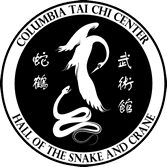By Marvin Smalheiser (From International Magazine of T’ai Chi Ch’uan archive www.tai-chi.com)
What is the proper way to breathe while practicing T’ai Chi Ch’uan?
What is the proper way to breathe while practicing T’ai Chi Ch’uan? There are many different methods. From the outset, you have to understand there is no one correct way, no “only” way. Some people will teach you to breathe in and out with each movement. Others will say just breathe as you would while walking.
While almost everyone agrees that breathing abdominally is most beneficial, there is more than one way to do this. One method is to expand the abdomen as you breathe in and contract the abdomen as you breathe out. This is sometimes called natural breathing or Buddhist breathing.
Another way is to contract the abdomen as you breathe in and expand the abdomen (sink the qi into it) as you breathe out. This is sometimes called Taoist breathing, reverse breathing, or natural breathing. Sometimes a combination of the two is used. There are different benefits from each method. The only wrong method is to force the method you are using.
A student should understand that a teacher has to guide a student according to what is correct for them at their stage of development. The instructor may feel a student has enough to learn at the beginning, without struggling with intricate breathing instructions.
Another factor is that through long practice, qi builds up in the lower abdomen, and this changes the dynamics of breathing so that the so-called reverse breathing is more natural. It is also important to understand that T’ai Chi Ch’uan was not constructed as a breathing exercise. Breathing should support the function of your body and mind as you do T’ai Chi Ch’uan.
When you reach a certain level of accomplishment, breathing can be integrated into movements in a natural way. But this is often the result of breakthroughs in developing internal energy. It is then sometimes referred to as the whole body breathing. Then the breath and energy can go through the body in a palpable way. Another factor is that the goal of practice is to be calm and even-minded. In sitting and standing meditative practice, the breath is useful to smooth the flow of thought because it is tranquil movement against the background of stillness.
In T’ai Chi Ch’uan, you try to achieve a balanced stillness in your mind in the midst of the movement of the body. The breath does not serve the same function until such a time when the movement is so integrated with the mind that it is experienced as stillness.
So when you practice, do not worry about breath control. Don’t try to match an inhale and exhale with a particular movement, becoming tense in the process. You would be superimposing breathing on a pattern of movement that does not lend itself to such a method.
Instead, just breathe naturally. If you feel a strong need to focus on your breath, use sitting or standing meditation to do this.
